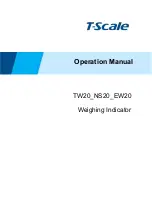
• Do not
install the flow meter near turbulence producing fittings such as elbows, reducers, close coupled valves, etc . The
inline flow meter does not require flow straighteners or special lengths of straight inlet/outlet piping to stabilize turbulent
flow patterns . However, to assure maximum operational reliability, avoid installation of elbows, valves and/or reducers
immediately adjacent to the meter inlet .
• Do not
install the meter near fast-acting valves . Fast-acting valves have the potential to create high magnitude hydraulic
pressure spikes . These spikes can damage the internal components of the meter, resulting in inaccuracies or malfunction .
• Do not
allow unidirectional meters to be operated against the direction of the flow arrow . The standard flow meter is an
unidirectional flow meter . The piston acts as a check valve to block flow in the reverse direction . This causes an excessive
pressure differential, which can result in damage to internal meter components . The flow meter is also available in a
modified design, which offers a reverse flow bypass feature to accommodate bidirectional flow .
OTEE:
N
Inline meters with a reverse flow bypass feature are available . Consult the factory for details .
Installing the Flow Meter
1 . Mount the meter so fluid is traveling in the direction of the flow arrow .
G
PM
LPM
OIL
Flow Direction
Arrow
Figure 1: Flow direction arrow
2 . Select a mounting location that is suitable for viewing and product service . To connect the flow meter into the piping
system, place an open-ended wrench onto the flow meter wrench flats adjacent to the pipe connection being installed .
DO NOT wrench on the opposite end of the flow meter or leakage may result .
Place wrench on meter flats on the same side
plumbing is being tightened.
Never
place wrench on meter flats opposite
plumbing being tightened.
Figure 2: Installing the meter
Installation
Page 7
September 2014
VAM-UM-00551-EN-03
www.
.com
1.800.561.8187








































